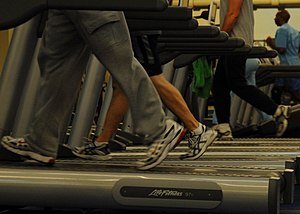Poor posture is often due to our daily activities such as hours of sitting in front of a computer, slouching while driving and watching television, and leaning forward when cleaning, gardening, etc. Nobody thinks about his or her posture all day---the trick is programming yourself into creating new habits.
To help change those bad habits, start by strengthening the muscles of the neck, back and core. Pilates offers many different exercises, for all levels of ability, which strengthen the back and core. Examples include the hundred, single leg stretch, plank and swimming. Resistance exercises such as reverse flies and rear delt row will strengthen the posterior deltoids and help keep your shoulders from rounding forward.
Exercises that focus on posture correction, including those that incorporate relaxing the shoulders away from the ears and pulling the chin towards the back of the head to align the spine, are helpful for eliminating bad slouching habits. Stretching and reducing stress is also key. A gentle style of yoga can help increase flexibility in the chest and shoulders and the breathing exercises do wonders for turning stress into bliss!
My recommendation is to find a trainer that can assist you with learning these different exercises; proper form and technique is essential to see results.
More then 30 minutes of cardiovascular exercise does NOT slow down your metabolism. The number of calories burned during cardiovascular exercise is mostly based on body weight, exercise time and exercise intensity. The greater the body weight, time and intensity; the more calories burned. Research also shows that the body's metabolism is elevated for a period of time after a cardiovascular exercise session.
Besides cardiovascular exercise, strength training also helps elevate metabolism. Muscle is metabolically active tissue. However, after age 30, metabolism slows by 5 percent each decade due to age related muscle mass loss. There is nothing you can do to prevent this, but you can slow down the loss of muscle with strength training. Not only will you burn calories while strength training, but as you gain muscle your metabolism will be elevated all day long.
Below are the American College of Sports Medicine and American Health Association exercise guidelines for healthy adults under age 65.
- Do moderately intense cardio 30 minutes a day, five days a week, or
- Do vigorously intense cardio 20 minutes a day, 3 days a week, and
- Do eight to 10 strength-training exercises, eight to 12 repetitions of each exercise twice a week.
Moderate-intensity physical activity means working hard enough to raise your heart rate and break a sweat, yet still being able to carry on a conversation. It should be noted that to lose weight or maintain weight loss, 60 to 90 minutes of physical activity may be necessary. The 30-minute recommendation is for the average healthy adult to maintain health and reduce the risk for chronic disease.



